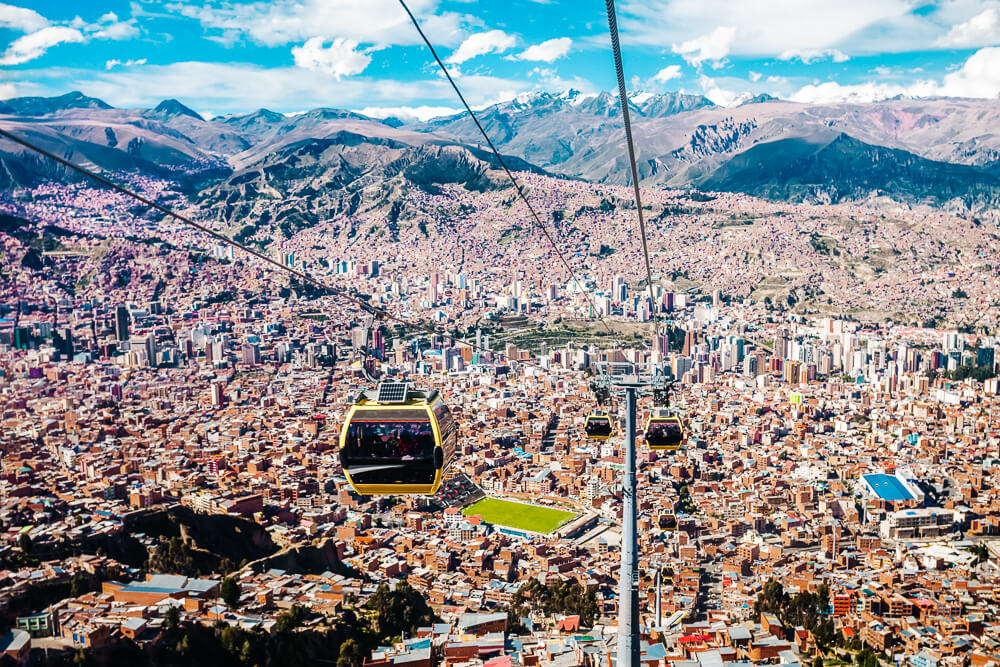Did you know that La Paz in Bolivia has the largest cable car system in the world? Not only is it a perfect way to quickly move around the city, it also offers amazing views. And that only for a few Bolivianos. You’ll fly above the different valleys of the city and look out over the neighborhoods and surrounding volcanoes. La Paz has several cable car lines that work as a metro system and connect different parts of the city. In this article I’m giving you all the information you need for exploring La Paz by cable car, including itineraries for the best views.
Welcome to La Paz Bolivia
Contrary to what people think, La Paz is not the capital of Bolivia. That is Sucre. However, La Paz is often seen as the capital, because it is the political and commercial center of the country. La Paz is a city of contrasts, where people in traditional costumes alternate with people in suits. There are slums on the mountain slopes, wealthy suburbs in the south and there is a busy commercial center. And everything in La Paz Bolivia is connected by the longest cable car system in the world, offering the best views, especially on a day with a clear sky.
In La Paz Bolivia you can enjoy yourself for days, discover neighborhoods, visit sights and viewpoints, take adventurous day trips and eat in fantastic restaurants. Curious? In the next article you will find all my tips for discovering La Paz in Bolivia.
Explore the largest cable car system in the world
A few years ago, it would take you hours to get around in La Paz Bolivia. You would be stuck for at least an hour, when traveling from the upper town of El Alto to La Paz. In 2014, the largest cable car system in the world, called Mi Teleferico, was put into service in La Paz with three lines. Nowadays (in 2025) La Paz Bolivia has eleven cable car lines in the colors red, yellow, green, blue, white, orange, light blue, purple, brown, silver and gold and more lines are in construction. It works like a metro system and connects the different parts of the city with each other.
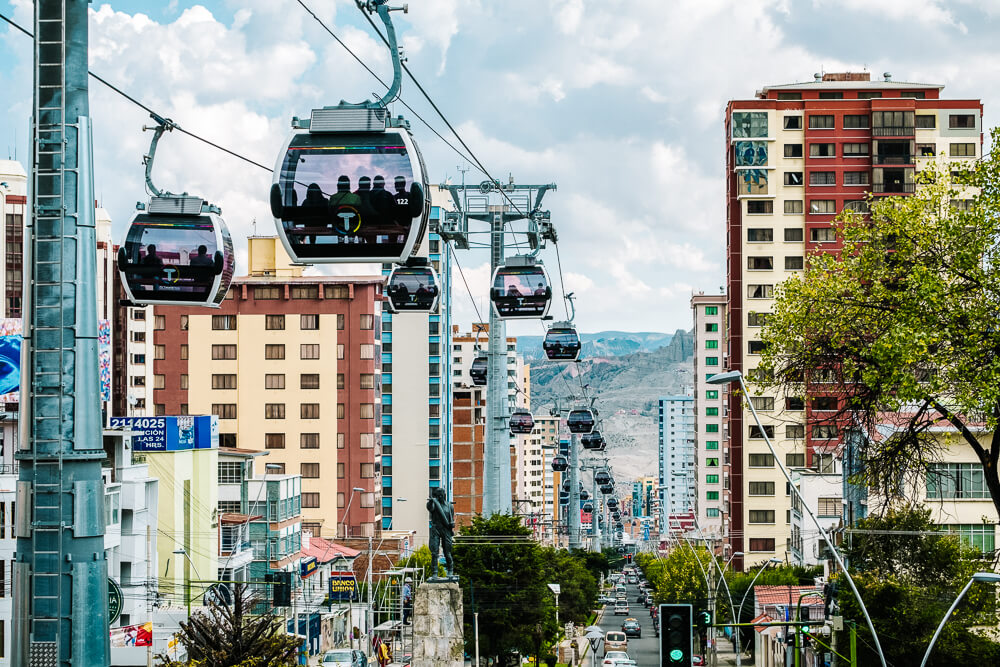
The yellow cable car in La Paz Bolivia
The yellow line (línea amarilla) offers the best views of La Paz and surroundings, starting at the Chuqi Apu, del Libertador station, bringing you up the mountain to the final station, called Qhana Pata. Here you can step out and walk to the mirador, a viewpoint, that offers a beautiful view of the city and the Ilimani volcano.
You can also make a stop at Sopocachi station, along the yellow cable car station in La Paz. This area offers nice restaurants, coffee shops and small art galleries.
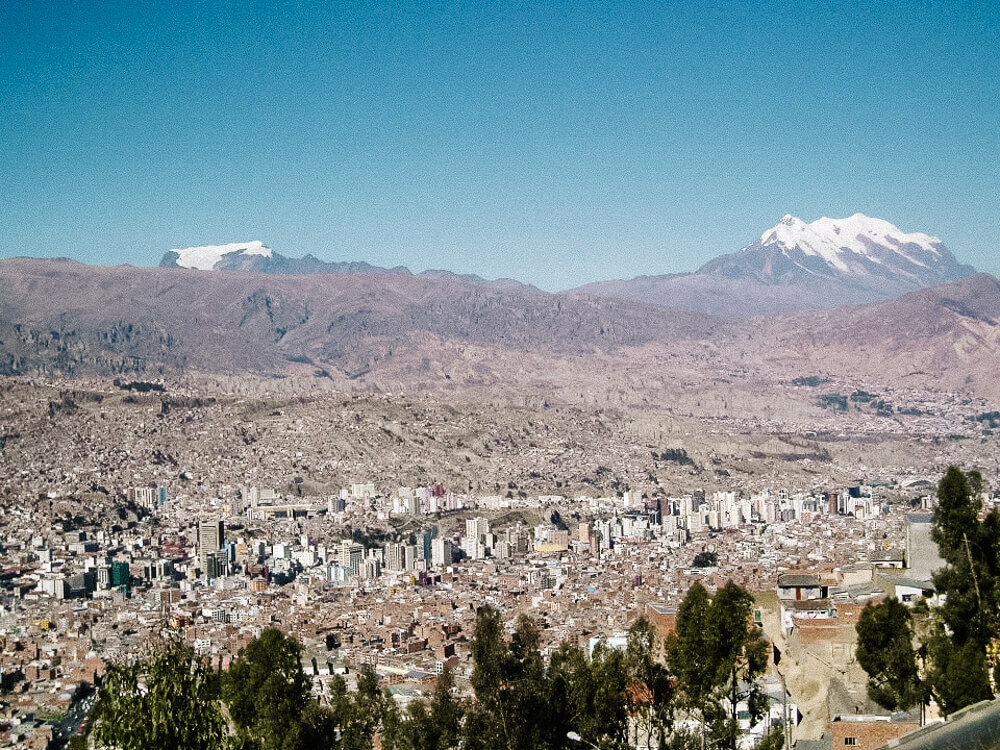
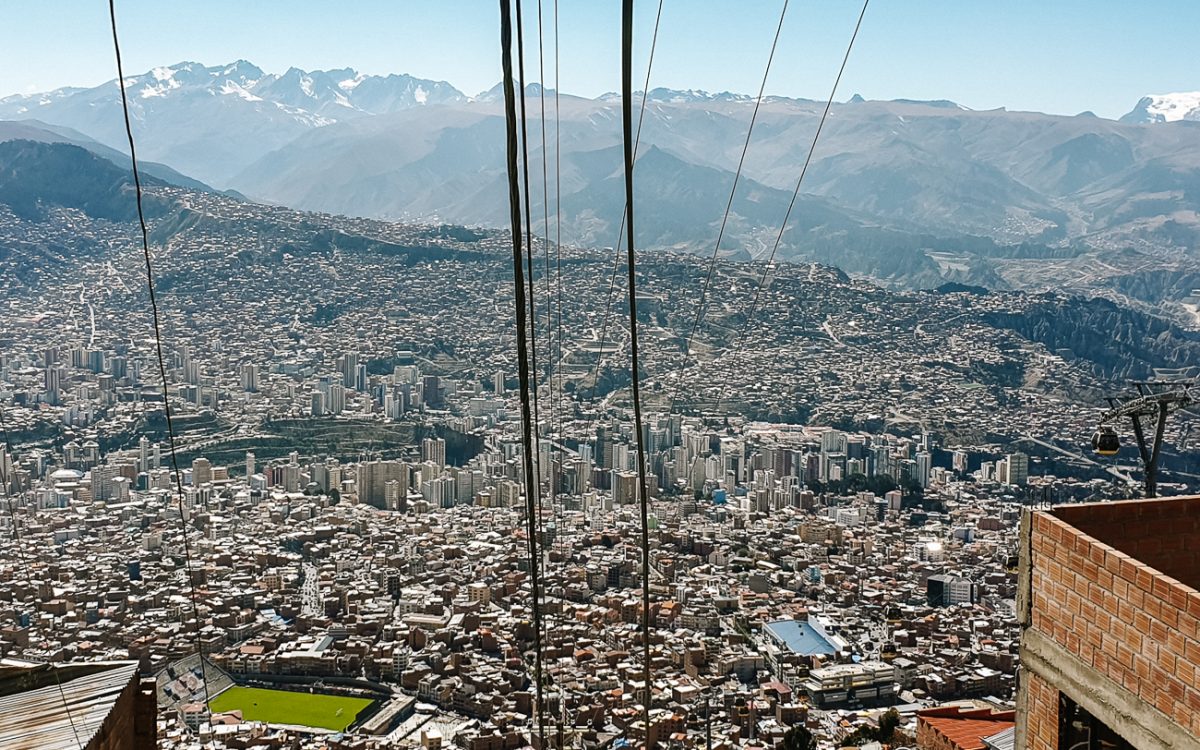
The silver cable car line into El Elto – La Paz Bolivia
When you take the yellow cable car in La Paz, you can change to the silver line (línea plateada) and continue into El Alto. Here, you float above, the upper town of La Paz and observe the hustle and bustle of everyday life in El Alto and its markets.
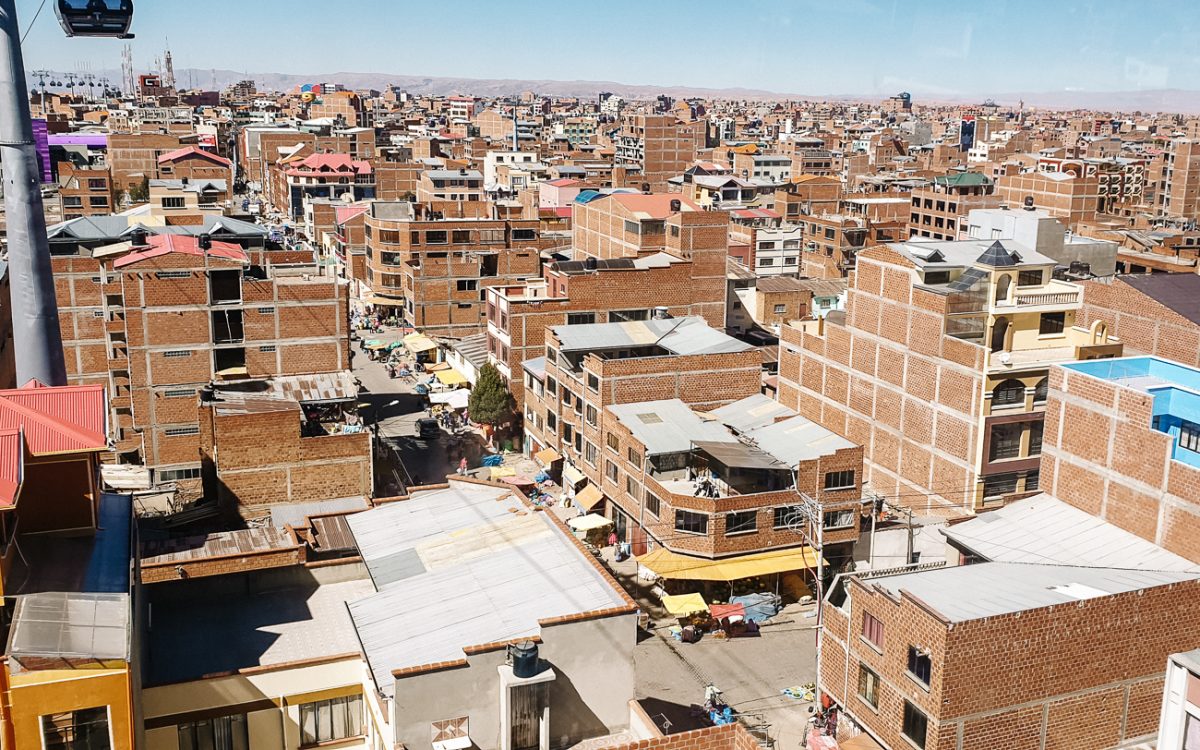
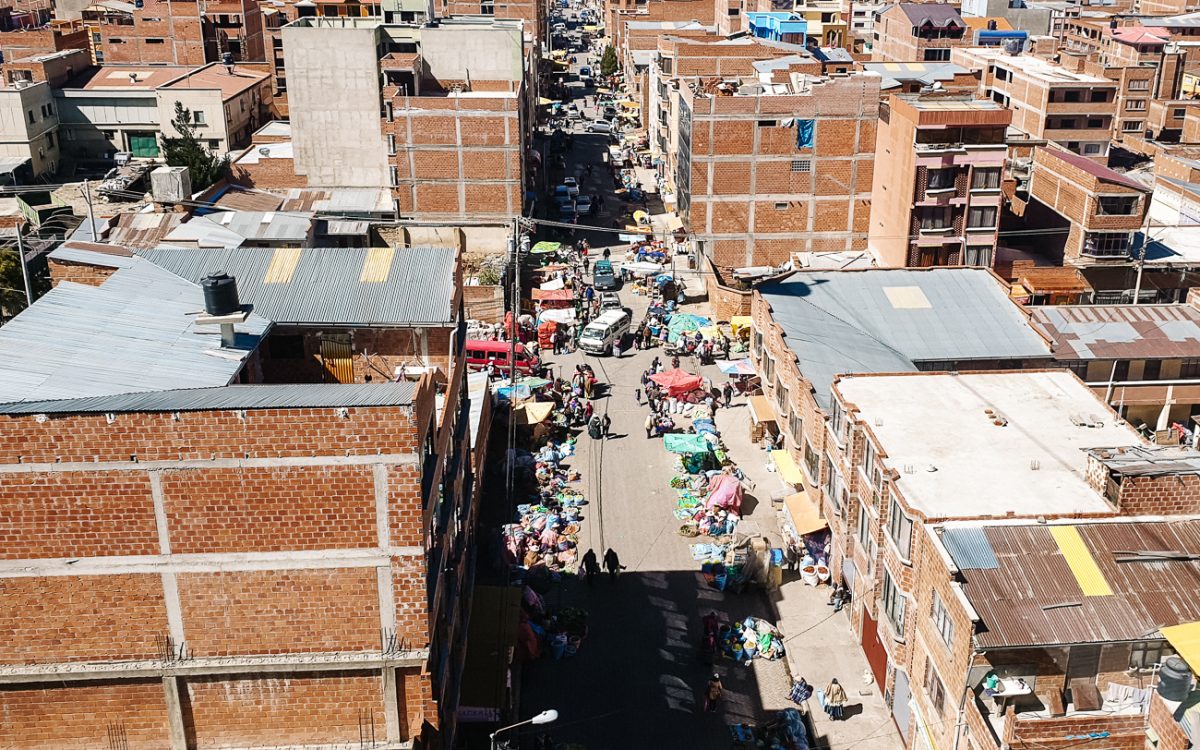
The silver line (línea plateada) ends at Estacion Jach’a Qhathu, 16 de julio. From this point, you can get out and visit El Alto. However, I wouldn’t recommend walking around this area by yourself, as it is not considered as safe. Especially if you don’t know your way. It is therefore recommended to go on a tour here, where you also learn more about this special city in Bolivia.
El Alto is a suburb of La Paz and is located at an altitude of 4000 meters. It is one of the youngest cities in Bolivia, but has grown into one of the largest and most densely populated cities in the country. It is nice to spend a day in El Alto and admire the cholets, mansions designed by the indigenous architect Freddy Mamani, the witch market and the 16 de julio, the largest market in South America. You can book this tour here.
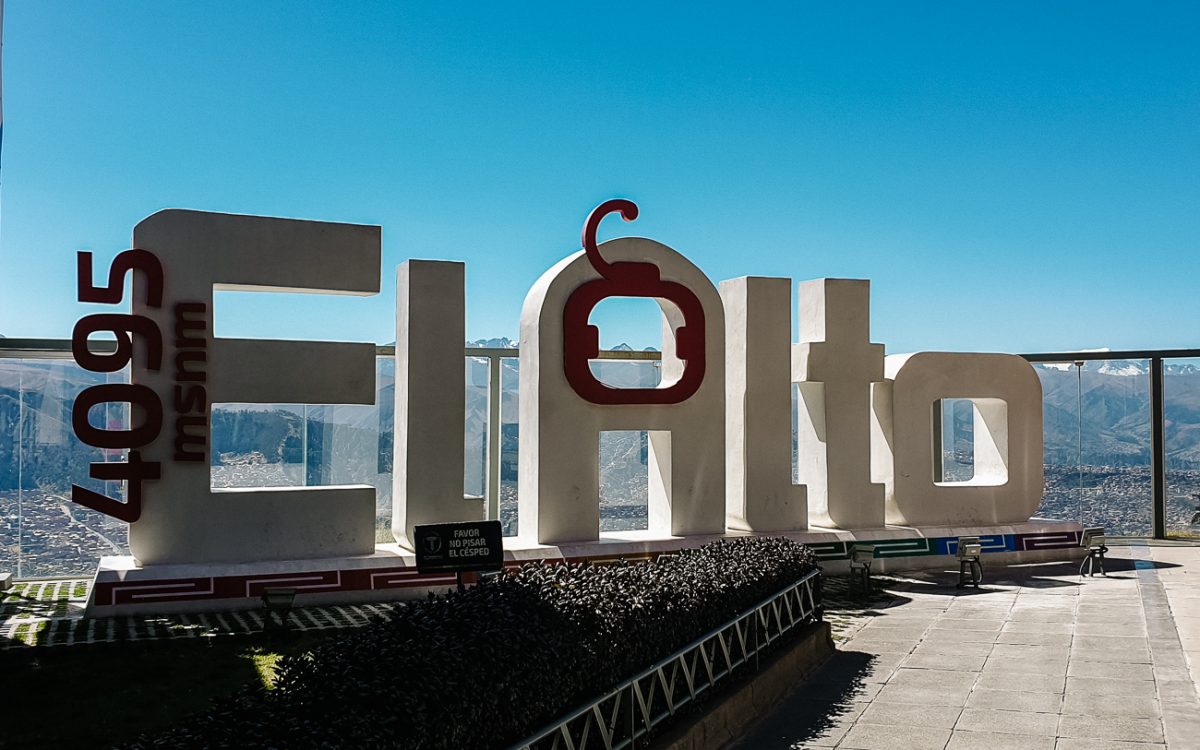
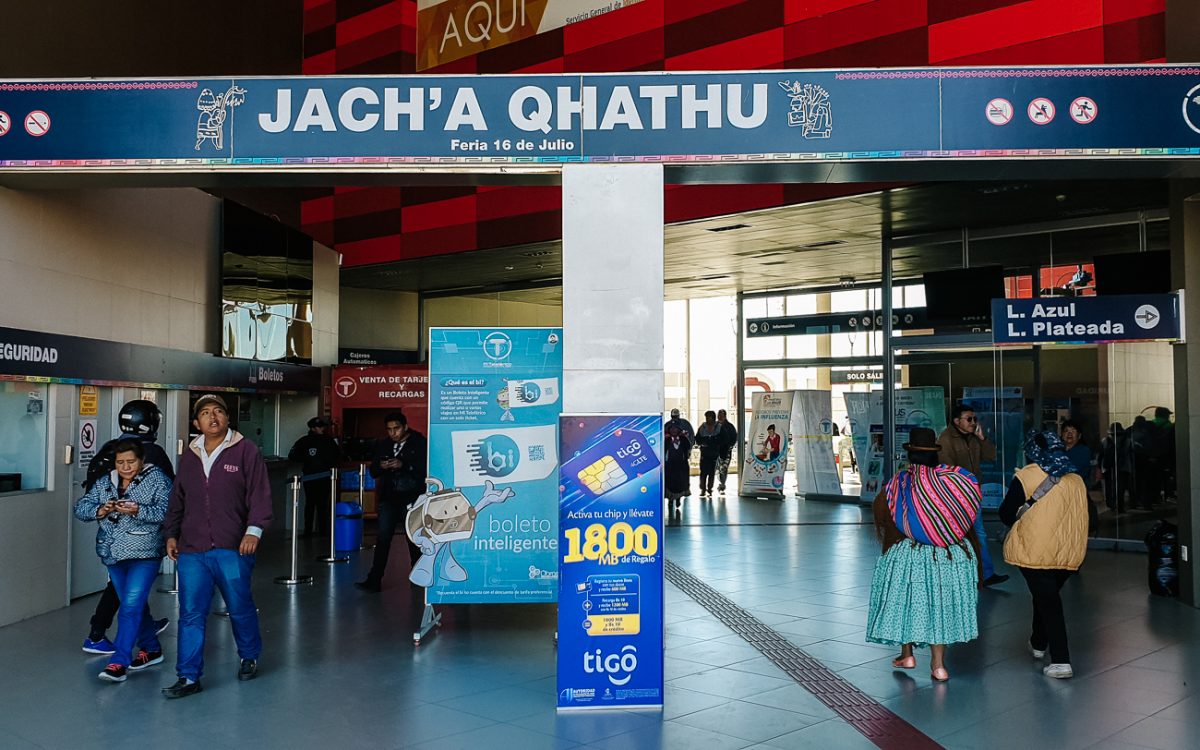
The red cable car La Paz Bolivia
If you want to return to the city center from El Alto, it is best to take the red line (línea roja) back to the Estación Central, in the city center. Along the way, you will catch a glimpse of El Cementerio General, the cemetery of La Paz.
The green cable car to Zona Sur in La Paz Bolivia
At the Estación Chuqi Apu, del Libertador, you can take the green line (línea verde) towards Zona Sur. This cable car offers views of the Valle de La Luna in La Paz. It is called the Moon Valley because it looks like the surface of the moon. When you get off at Estación Irpawi, you will find yourself in a completely different world. This is where the rich and wealthy Bolivians live. Neat avenues, large houses, expensive restaurants and shopping boulevards. Zona Sur is especially nice to visit if you are shopping for luxury items or looking for a culinary experience in Gustu, from the list of South America’s best restaurants.
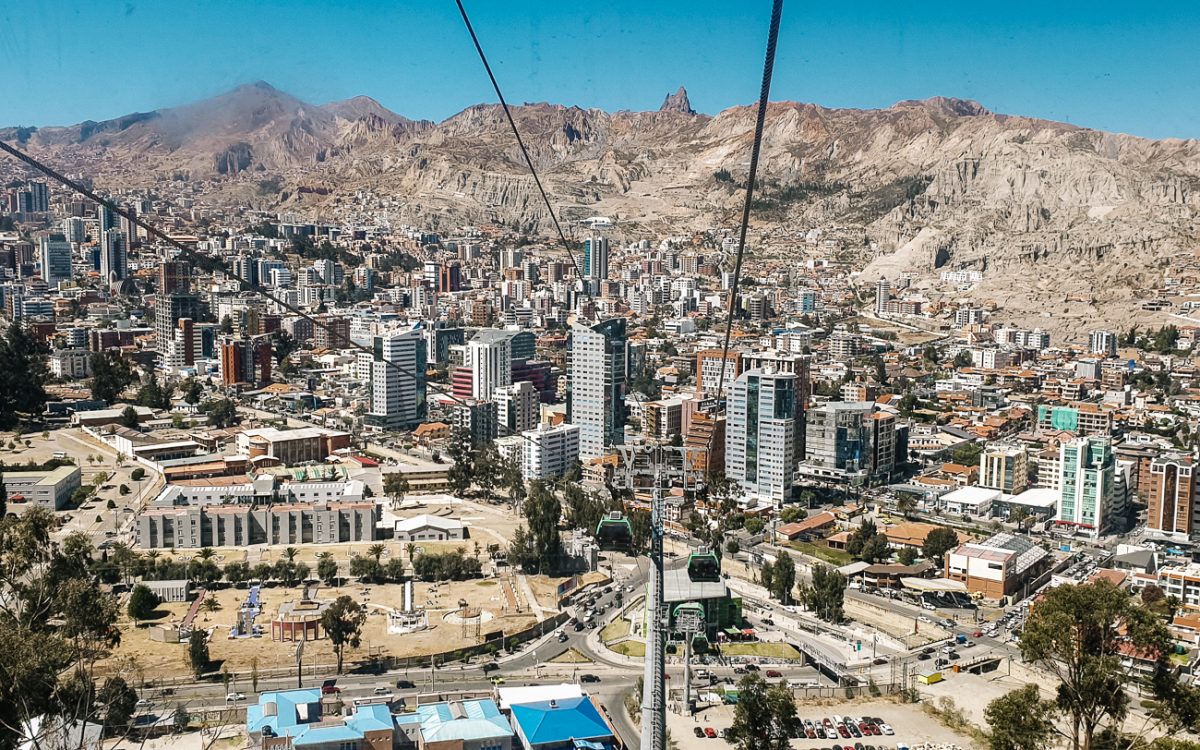
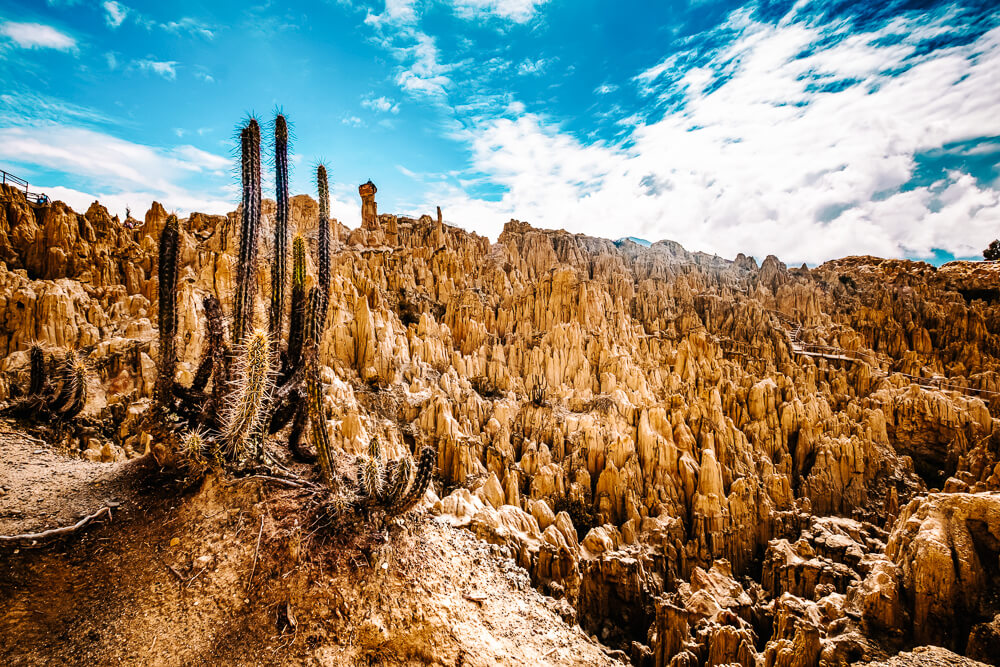
The Linea Morada cable car in La Paz Bolivia
Still not had enough of the viewpoints in La Paz? You can take the Linea Morada cable car and stop at Tiquira to walk up to the lighthouse, which also offers beautiful views of La Paz Bolivia.
How to use the cable car in La Paz Bolivia
The cable car system in La Paz Bolivia is well organized and fast. You can buy your ticket at the ticket counter and follow the route to the gondolas, where everyone stands in line and people are monitoring the maximum number of people per gondola. It is super quick, clean and safe. A single ride costs a few Bolivianos, wich is a few cents. But it is even easier to buy a public transportation card, which you charge at the stations. A small amount is debited with each ride. There are different routes that are indicated by colors and letters. It works exactly the same as with a metro system. Make sure to get a La Paz cable car network map to know exactly where you are at all times.
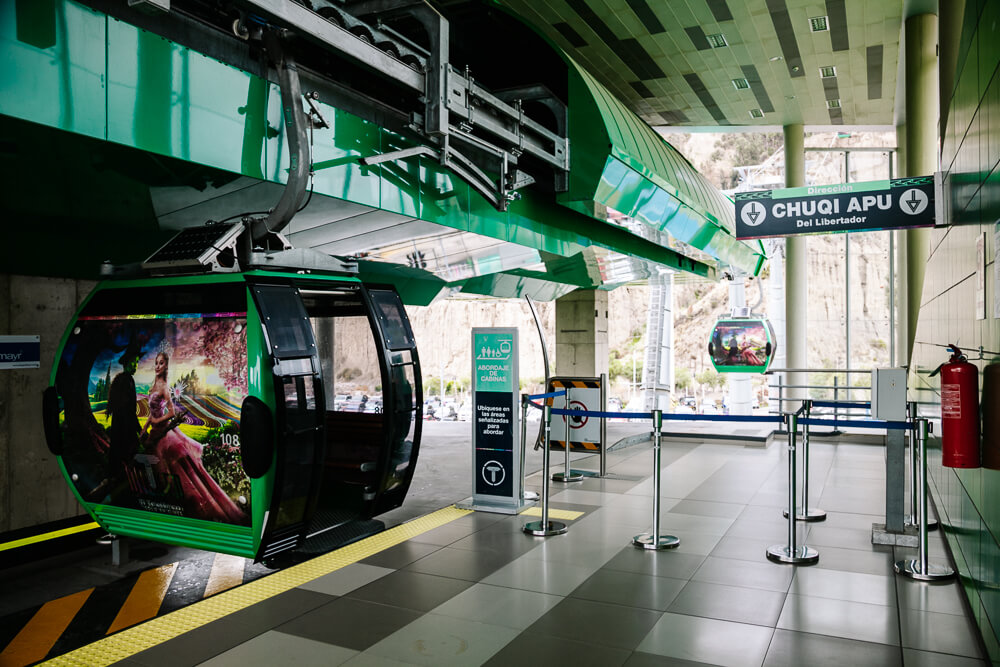
More about La Paz
In La Paz Bolivia you can enjoy yourself for days, discover neighborhoods, visit sights and viewpoints, take adventurous day trips and eat in fantastic restaurants. Curious? In the next article you will find all my tips for discovering La Paz in Bolivia.
Tours in La Paz Bolivia
Looking for tours and things to do in La Paz Bolivia? This is an overview.
Hotel tip La Paz
Are you looking for a nice hotel in La Paz Bolivia? Then you want to stay at Hotel Mitru Sur, located in the Zona Sur district in La Paz. Not only will you spend the night here in a comfortable way, you will also have the best restaurants within walking distance and you will find yourself anywhere in the city in no time with the cable car.
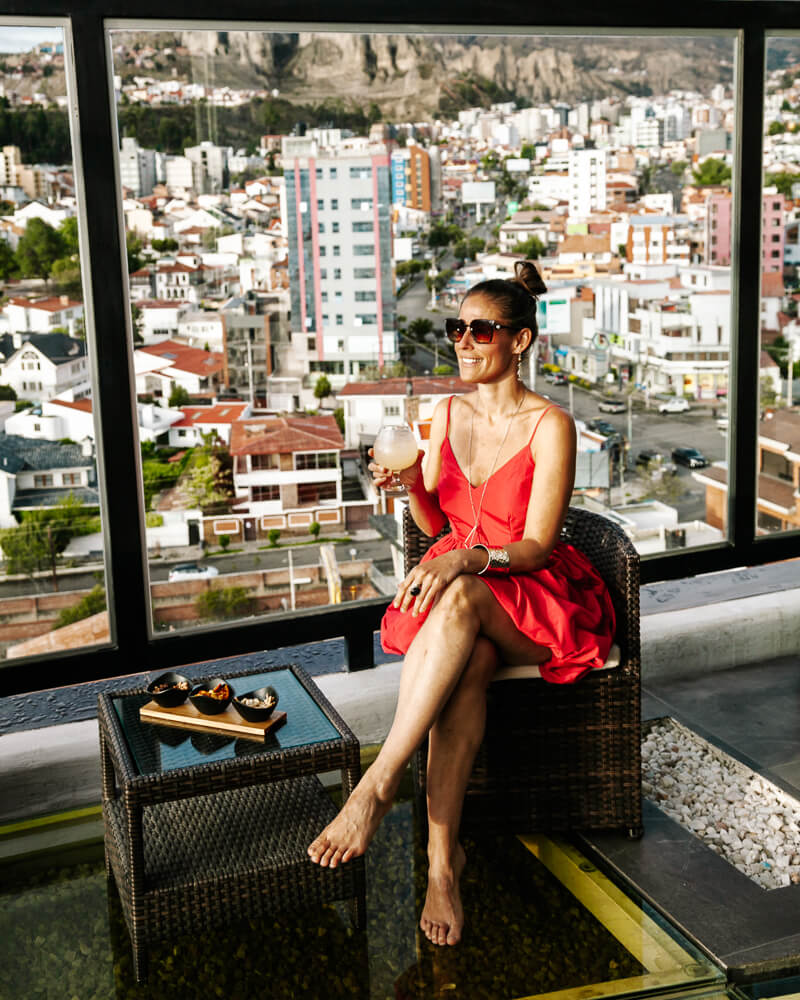
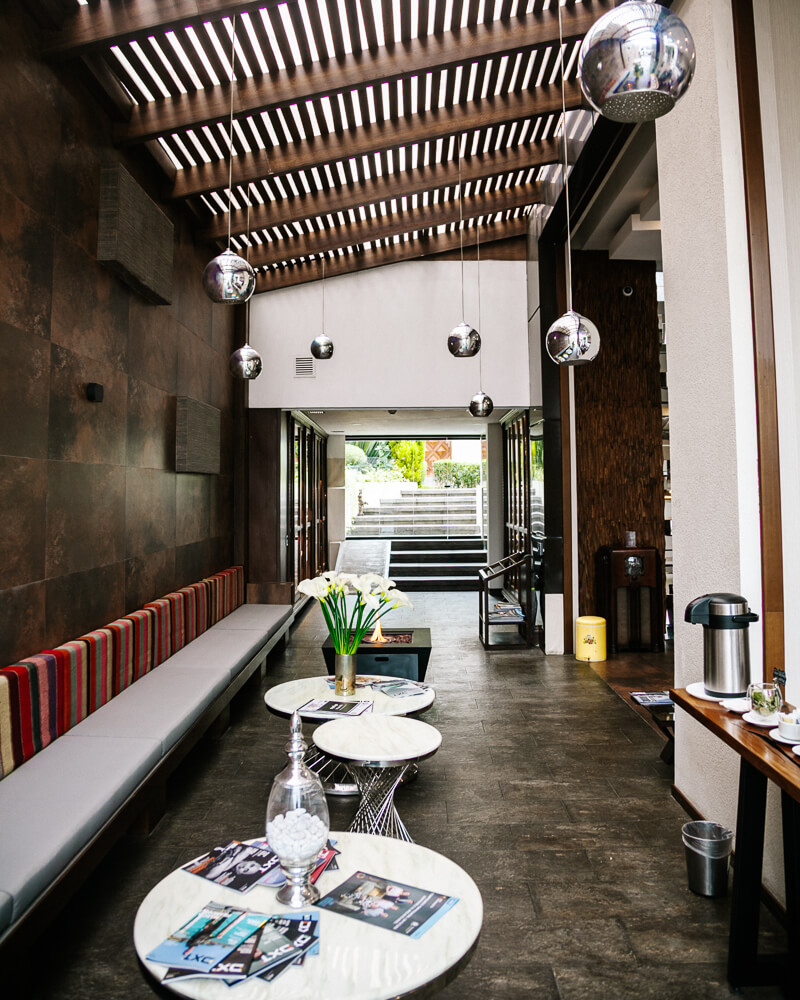
Do you want to stay in Hotel Mitru Sur in La Paz Bolivia? You will find the latest prices and availiability here.
More about Bolivia
Did you enjoy reading this article about using the cable car in La Paz Bolivia? Let me take you on a journey along the most beautiful destinations and places to visit in Bolivia. In the next articles you will find my Bolivia travel guides with lots of inspiration and tips.
- Things to do in Bolivia – 25 destinations and tips
- Things to do in La Paz Bolivia
- Salar de Uyuni Bolivia – the biggest salt flats in the world
- Things to do in Sucre Bolivia
- Discover Tiwanaku, a pre-inca site in Bolivia
- A visit to the mines of Potosí
- The best things to do in Copacabana Bolivia
- The Bolivian Inca trail – everything you want to know
- Potosí Bolivia – the highest city in the world
- Best time to visit Bolivia
- How safe is Bolivia – tips for your visit
This article may contain affiliate links. If you purchase something using one of our links, we may receive a commission at no extra cost to you, which helps us keep this blog alive. Thank you for your support! Please see our disclosures for more information.

